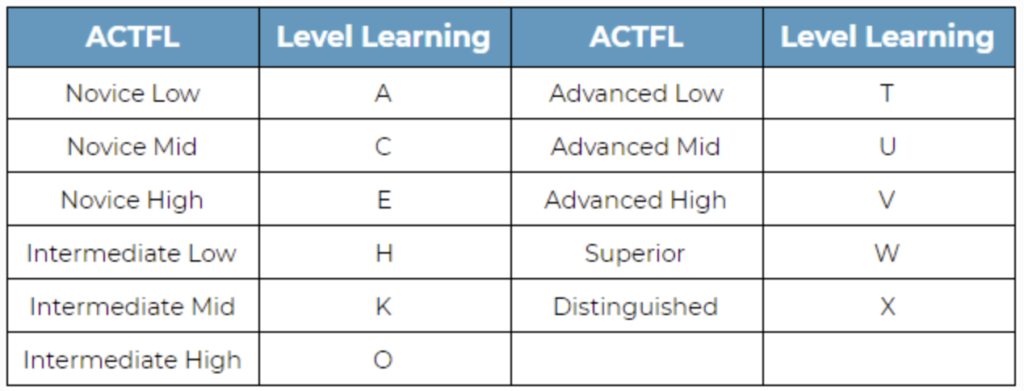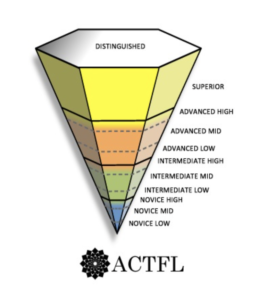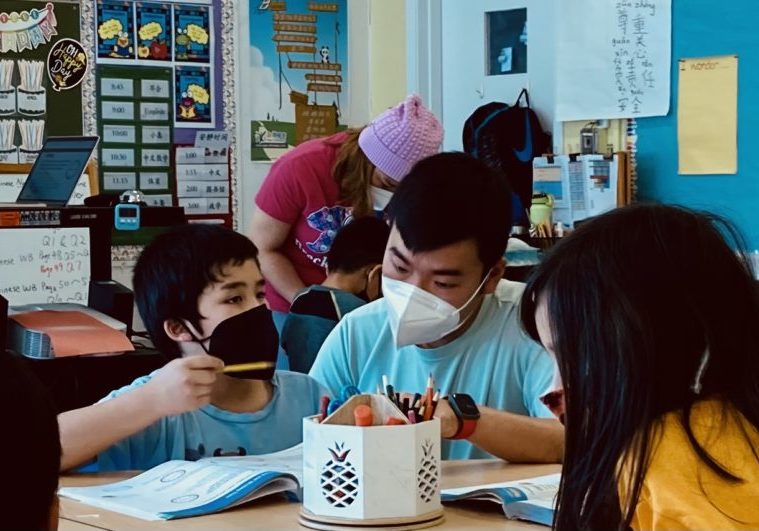Proficiency-based Language Learning at Shu Ren International School
Posted in Academics
Every school wants to see growth in student learning as well as improvement (or growth) in the school’s programs. Continual growth and improvement is a fact, and, simply said, it is what makes working in schools exciting. Organizations alike ask themselves, where do we want to be? And how will we get there? If all aspects of an organization were mapped out on a proficiency continuum, progress could be plotted and measured on the way towards improvement.
Proficiency-based learning (PBL – not to be confused with Project Based Learning) is a term most will not recognize. In fact, PBL is often and widely utilized across many subjects in a school. How one becomes proficient in a subject, or unit of study, relies on a robust set of standards and a triangulation of data to measure and respond to the learning growth towards proficiency. The learning outcomes are the core of any subject or unit. In other words, we are attempting to answer these questions: 1) What do we want students to learn? 2) When do we want students to achieve the learning targets? and 3) How do we know the students learned?
An additional component needed for successful PBL is evidence-based grading. Through a unit, students show their learning in a variety of ways. Our teachers evaluate the students’ understanding by examining evidence and providing feedback to ensure students are on the way to proficiency. Evidence-based grading must always be timely and meaningful. This is also where the triangulation of data occurs. In order to make professional judgements on the learning, teachers need to have multiple sources to most accurately report on the success. On the flip side, students need multiple and varied opportunities to show their learning.
Let us take a moment to show how proficiency-based learning applies to our Chinese Language program here at Shu Ren.

First, it is important to note that Chinese is taught as an additional language and not a mother-tongue language. Despite having a few near-native Chinese speakers, our program is still geared for all learners to reach fluency in the language by using a proficiency-based model. Proficiency in a language is always leveled and developmentally appropriate.
Shu Ren currently uses Level Learning as its proficiency-based learning model. Our current program organizes the proficiency levels in a way that builds on one another. For example, the range of proficiency levels begins with a learner being assessed as an “A” and ending with distinguished, “X”. In figure 1 you will see a translation guide using two proficiency-based models: Level Learning and the American Council on the Teaching of Foreign Languages (ACTFL). ACTFL are a set of standards, or also called, learning outcomes, that are broken down into proficiency levels categorized from “Novice Low” through “Distinguished” (Fig 2).

How a school knows where a new student is upon admission is based on a short external assessment – this would be used for placement only. How a teacher knows at any given time through the learning journey is determined by the sound use of evidence-based grading. Our teachers will track and record evidence through their units, giving feedback along the way. External assessments aligned to the standards then provide further information about where the student is. By using internal and external data, teachers can track the learning growth of all their students, identify any learning gaps, and set targets. External, norm-referenced assessment results also give our school benchmark comparisons and allows us to share the results with parents.
An often tricky part to determine is how much growth can be expected with one school year’s worth of learning. It typically does not boil down to the amount of time, but how the time is spent and how the classes are organized on the timetable. The most effective and efficient way is to line up the language classes at the same time so that the varied levels can be served across grades. For example, during the Chinese language learning time, students in grade 1 and grade 2 who are at the same level would learn together. That way, the teacher is targeting the needs of those particular students. We are currently exploring ways in which we can maximize the impact we can have on the success of each learner – no matter where they are on the continuum.
At Shu Ren International School, we have a visionary language program. According to Greg Duncan, a co-author of the ACTFL Proficiency Guidelines, a visionary language program has four fundamental characteristics:
- There are set proficiency targets for each grade level
- There are instructional pathways to reach the targets
- Internal and external assessments are set to see if targets are being met
- Assessment data is used to improve learning
Our continual commitment to these visionary characteristics is fundamental in all of our work with language acquisition. Not only does Shu Ren focus on Chinese language acquisition through its language classes, we ensure students are immersed in the Chinese language through other subjects. Students in elementary school receive PE instruction in Chinese, as well as about half of the stand-alone mathematics classes. In addition, the trans-disciplinary IB units are often taught in Chinese and English. The immersive experience renders multilingual and culturally-literate students.
We look forward to sharing our continual enhancement of our language and immersion program with you as we work towards our own growth and improvement. Learn more about our curriculum.
